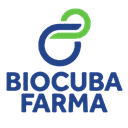Executive Secretary

VIII International Symposium on Chemistry and Pharmaceutical Sciences
STA
V International Symposium "Technological and Environmental Security"
Abstract
In this work, the efficacy of sorghum crop residues (RAS) and sugarcane bagasse (BCA) as biosorbents in the removal of methylene blue dye from aqueous solutions using fixed-bed columns is evaluated.
The effect of the concentration of the methylene blue dye, height of the packing and flow on the percentage retained is studied applying a complete factorial design 23, the dynamic parameters are obtained and adjustment is made to mathematical models Adams-Bohart, Thomas, Yoon-Nelson and Dose-Response.
The results show that the best conditions for the removal of the dye were at the lowest concentration, the highest packing height and the lowest flow, conditions at which 29.00% and 38.88% of methylene blue are retained with RAS and BCA respectively and that all the variables and interactions have an incidence with a very marked effect of the dye concentration.
The total amount of retained adsorbate was 40.72 mg and 51.32 mg and the biosorption capacity was 8.63 mg/g and 10.14 mg/g with RAS and BCA, respectively.
The Dose-Response model represents the best correlation to the experimental data, with R2 values greater than 0.9500 with both biosorbents.
Resumen
En este trabajo se evalúa la eficacia de los residuos de cosecha de sorgo (RAS) y bagazo de caña de azúcar (BCA) como biosorbentes en la remoción del colorante azul de metileno a partir de soluciones acuosas utilizando columnas de lecho fijo.
Se estudia el efecto de la concentración del colorante azul de metileno, altura del empaque y flujo sobre el porcentaje retenido aplicando diseño factorial completo 23, se obtienen los parámetros dinámicos y se realiza ajuste a modelos matemáticos Adams- Bohart, Thomas, Yoon-Nelson y Dosis-Respuesta.
Los resultados demuestran que las mejores condiciones para la remoción del colorante fueron a la menor concentración, la mayor altura del empaque y el menor flujo, condiciones a las que se logra retener 29,00 % y 38,88 % de azul de metileno con RAS y BCA respectivamente y que todas las variables e interacciones tienen incidencia con efecto muy marcado de la concentración de colorante.
La cantidad total de adsorbato retenido fue de 40,72 mg y 51,32 mg y la capacidad de biosorción de 8,63 mg/g y 10,14mg/g con RAS y BCA respectivamente.
El modelo Dosis-Respuesta representa la mejor correlación a los datos experimentales, con valores de R2 superiores de 0,9500 con ambos biosorbentes.
About The Speaker

María Hertha Broche Galindo

Discussion




